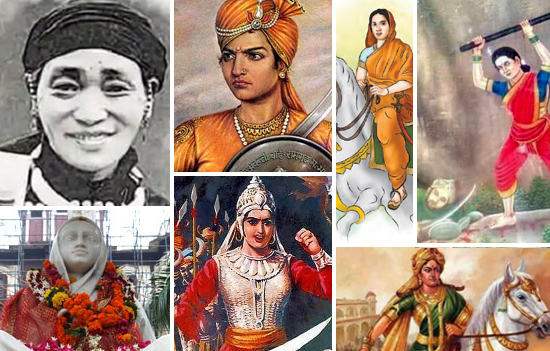- Many get
confused between Shruti and Smriti. So what is Shruti and why was there need
for Smriti? Which are the key Smritis?
Vedas are supremely significant in the Hindu
sanatan dharma. During the early Vedic period, followers adhered strictly to
their teachings, viewing them as the foundation of Vedic Dharma. “Vedo akhilam dharma
mulam”
"Veda" is derived from "Vid-Gyane," which emphasizes knowledge and wisdom. The Vedas are known as Shruti because they are divine knowledge that were directly "heard" or "revealed" to ancient sages (Rishis) through deep meditation and spiritual insight.
Today, we have access to four primary
Vedas: Rig Veda, Yajur Veda, Sama Veda, and Atharva Veda. Each Veda encompasses
various components, including Samhitas, Brahmanas, Aranyakas, and Upanishads.
Over the centuries, these texts have developed numerous branches; however, many
have dwindled in usage and comprehension.
Currently, the preservation of these
ancient texts relies on two methods: kanthast
(oral transmission) and granthast
(written documentation). Unfortunately, due to the prevailing conditions of
Kaliyuga, the memorization and active study of these texts have significantly
declined. As a result, much of the knowledge in parts of the Vedas is not being
used, making it difficult for people today to understand and learn from the highly
insightful teachings of the Vedas.
The loss of some of these sacred texts
has led followers of sanatan dharma to forfeit valuable knowledge. Furthermore,
the disappearance of many branches within the four Vedas has resulted in a
significant gap in understanding and wisdom. In response to this decline, Smriti emerged to revive and preserve the essential teachings and
practices that were at risk of being forgotten.
The term Smirti means sacred texts that are based on human memory and
tradition. They are derived from and
inspired by the Shruti. Smriti can be
understood as Smirtir Vyateeta Vishaya,
referring to knowledge that has been lost from the past, particularly from the
branches of the four Vedas. Smriti aims to revive this lost wisdom. At the time
when the entire Vedas were recorded, Smriti did not exist. However, as sanatan dharma
began to lose touch with the branches of the Vedas, the Rishis went into deep
meditation and derived the teachings of Smriti to preserve and restore this
invaluable knowledge. There is no
definitive count of all Smriti texts due to their vastness.
Some
well-known Smriti texts include Manu Smriti, Yajnavalkya Smriti, Bhrhaspati Smriti,
Narada Smriti, Parashara Smriti, Atri Smriti, Vishnu Smriti, Gautama Smriti,
Vaikhānasa Smriti, and Shankha Smriti.
These texts are
available for reading and studying, offering valuable guidance on the practices
and teachings of sanatan dharma. In addition to these, there are other
important texts like Smriti, such as the 18 Puranas, the Mahabharata, the
Ramayana, and the Dharma Shastras. These texts are just as important as the
Smritis and help to provide a clear understanding of the spiritual, ethical,
and cultural teachings of Hinduism.
Together, they
offer a rich source of knowledge for anyone looking to learn and follow the
wisdom of sanatan dharma.
Manusmirti is an ancient Hindu text attributed to ruler Manu. Manu is referred to as the "first king" or "first lawgiver”, serving as a foundational legal and ethical guide. It addresses social order, law, and individual duties based on varna (class) and ashrama (stage of life), emphasizing the concept of dharma (righteousness).
 Manu Temple in Manali. The town gets its name from Rishi Manu.
Manu Temple in Manali. The town gets its name from Rishi Manu.
Yajnavalkya
Smriti
is an ancient Indian text written by the Rishi Yajnavalkya. It is one of
the key Dharma Shastras, alongside the Manusmirti, and focuses on law, ethics,
and social duties within Hindu society.
Bhrhaspati
Smriti is another ancient Indian text that focuses on law and ethics, attributed to the Rishi Deva Guru Bhrhaspati, who is often associated with wisdom and knowledge in Hindu tradition. Another name for the "Bhrhaspati Smriti" is the "Barhaspatya Smriti." Like other Dharma Shastras, it provides guidance on various aspects of social and moral conduct, including rules for personal behavior, family life, and governance.
The Narada Smriti is an ancient Hindu text attributed to
the Rishis Narada. He is the most loved devotee of Lord Narayana. This Smriti is part of the broader tradition
of Dharma Shastras and focuses on various aspects of law, ethics, and social
conduct. He showed to many devotees the
righteous path.
The Parashara Smriti, written by Rishi Parashara, who is also the father of Ved Vyasa, offers a practical and straightforward guide for ethical living that feels very relevant today. Unlike some older texts that can be hard to follow, the Parashara Smriti is easy to understand and apply in various situations. It promotes equality, avoiding issues of gender or caste discrimination, which makes it inclusive and relatable. This focus on fairness and practicality makes it a great resource for anyone looking to live a good life in today’s world.
Atri
Smriti
is an ancient Hindu text attributed to Rishi Atri. It focuses on legal and ethical guidelines
for individuals and society. The topics include duties across social classes,
family law, and personal conduct, emphasizing the importance of dharma
(righteousness). While not as well-known as other Dharma Shastras, it adds to
the understanding of ethics in Hindu culture.
The Vishnu Smriti is written by Rishi Vishnu. It is an important ancient Hindu text that
outlines legal and ethical principles for individuals and society. It addresses
various aspects of life, including duties, social order, and moral conduct,
emphasizing the concept of dharma (righteousness). The Vishnu Smriti serves as a guide for living a virtuous life,
reflecting the values and norms of Hindu tradition.
The Gautama Smriti is an ancient Hindu text written by
Rishi Gautama. It focuses on legal and
ethical guidelines for individuals and society. It addresses duties across
social classes, family law, and personal conduct, emphasizing the importance of
dharma (righteousness) in promoting a just and orderly society.
The Vaikhanasa Smriti is an ancient Hindu text
attributed to the Rishi Vaikhanasa, primarily focusing on rules and rituals
related to temple worship and religious practices. It outlines the duties of
priests and guidelines for various ceremonies, emphasizing the importance of devotion
and proper conduct in religious life.
The Shankha Smriti is an ancient Hindu text written by
Rishi Shankha, focusing on legal and ethical principles within Hindu society.
It addresses various aspects of life, including duties, personal conduct, and
social responsibilities, emphasizing the importance of dharma (righteousness).
For followers of Sanatana Dharma, simply learning the Vedas or Smritis is not enough to make progress in all areas of life. While it's important to follow the Vedas, consulting the Smritis can help clarify doubts and provide a deeper understanding. This combination helps in achieving the four goals of life—Dharma (righteousness), Artha (wealth), Kama (pleasure), and Moksha (liberation)—and supports overall growth and happiness.
The Vedas and
Smritis explain how followers of Sanatana Dharma should live their lives and
take care of Prakruti, which includes
the five elements of nature: Prithvi
(earth), Jala (water), Agni (fire), Vayu (air), and Akasha
(space).
Both texts emphasize
the importance of these elements in keeping balance with the environment. They
also teach that these elements should never be used for selfish purposes,
highlighting the need to protect and respect the natural world.
Currently, there
are some controversies about the Smritis.
First Varna Vyavastha, and
second Stree Dharma.
According to
modern people, the Smritis are wrong on these two issues. Historically,
up until the 20th century, there were few controversies regarding this
structure. However, modern scholars, lacking a deep understanding of Varna
Vyavastha and influenced by contemporary ideas, have contributed to
misunderstandings of the caste system.
Similarly, debates surrounding Stree Dharma (role of women) have arisen. Hindu scriptures
consistently uphold the dignity and respect of women within sanatan dharma, as
seen in sacred texts like the Ramayana, Bhagavad Gita, Vedas, and Puranas,
which portray women in high regard. The lack of thorough study of the Vedas and
Smritis has led some modern scholars to adopt unequal perspectives, mistakenly
ranking the four varnas in a hierarchy of superiority. Due to these controversies, scholars have
ignored the majority of the Smritis that are beneficial and needed
for a righteous life.
 Unsung Women Warriors of India.
Unsung Women Warriors of India.
Conclusion
The Vedas and Smritis are important texts in sanatan dharma that
offer wisdom on how to live a good and meaningful life. The Vedas, which are
Shruti (divine knowledge) were revealed to ancient sages through deep
meditation. Over time, some parts of the Vedas have been lost, which makes it
harder for people today to fully understand their teachings. To help with this, the Smritis were created
to keep the essential knowledge alive and to provide practical guidance on how
to live ethically and spiritually.
Although Smriti is derived from Shruti, which is the
Vedas, it is not the case that the Smritis were followed by all and
uniformly across India. Further, Smritis are being used to convey the essence
of Sanatan Dharma when Shruti are eternal truths and Smriti
contextual traditions.
Though these texts
offer valuable lessons, there are some misunderstandings about them, especially
regarding the Varna system and the role of women (Stree Dharma). These issues
have led to debates in modern times. However, when studied properly, the Vedas
and Smritis show that everyone should be treated with respect and dignity,
regardless of their role or gender.
Today it has become very important and necessary to learn these
sacred texts by having a Guru (teacher) who can guide us in learning them,
along with faith in them and the knowledge of the Sanskrit language to be able
to understand what has been written in these sacred texts. Then only we can live a balanced life,
focusing on the four goals of life: Dharma (righteousness), Artha (wealth), Kama
(pleasure), and moksha (freedom).
By learning from these texts, we can lead better lives and make
positive contributions to our communities and the world.
Also read by author Introduction to
the Vedas
Author Srinathji is a Sanskrit/Vedic
educator and Veda Pandit with extensive knowledge in Hindu scriptures, Puranas,
Sri Ramayana and Sri Mahabharata. I can teach online courses on Hinduism,
the Sanskrit and Telugu Languages, and the Hindu scriptures. I have been practicing the Vedas for
the last 35 years and teaching for the last 20 years. I currently do in
person and zoom classes with my students. Additionally, I have taught
Sanskrit at a highly reputed Osmania University (NAAC accredited) in Hyderabad.
Also read
1. Vedas and Upanishads – A structural profile
2. Characteristics
of Indian Philosophy
3. Importance of
Smritis in Indian Tradition
4. Unsung Women
Warriors of India
5. Comprehensive
article on Caste
Editor Notes
Swami Alokananda
wrote in Prabuddha Bharata on the importance of
Smritis. Excerpts –
“Though srutis are eternal, for
all practical implementation, necessary changes need to be made according to
changing times and situations. Hence with regard to place-time-perspective, the
upholders of righteousness in society (dharma-vetta) recall to memory
the religious codes prescribed in the srutis; bring about necessary
changes in them; and compose smṛtis. Verses in Śabdakalpadruma (an
Encyclopaedia of Sanskrit words) say that smṛti contains 28 behavioural codes (laws). Hence, it is also well known as ‘Aṣṭaviṁśati Tattwa’.
The importance of smṛtis with regard to the
duties of a king cannot be underestimated. The Yajnavalkya Samhita deals in detail issues like legal
procedure, loans and their repayment, division of property, right to authority, disbursement and receipt of salary, punishment for the use of abusive language, and the like. The existence of laws regarding them enables the smooth running of society.”